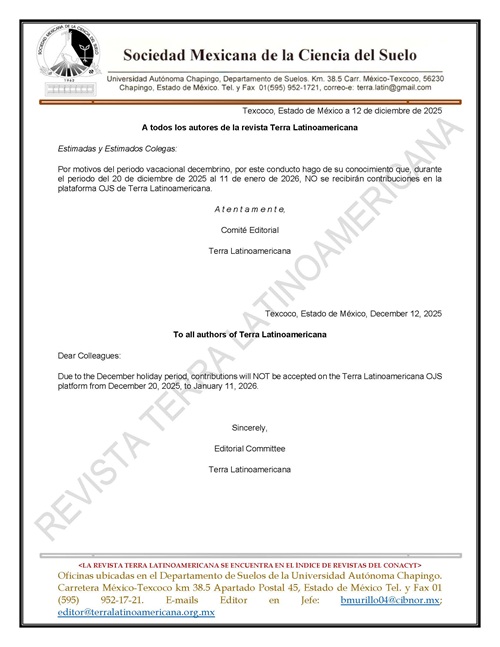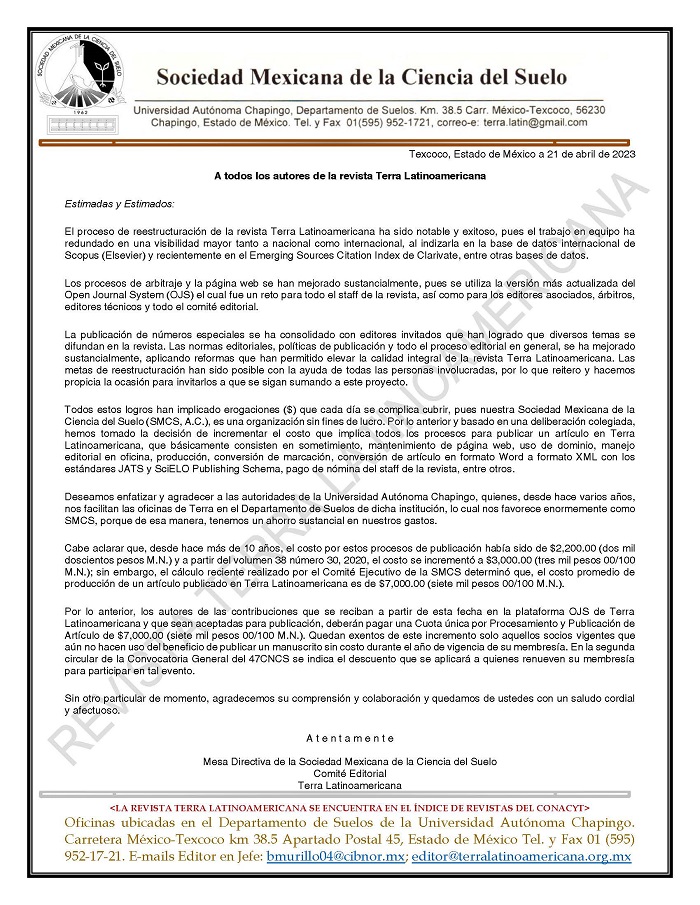Micromorphology of Pedogenetic and Sedimentary Processes at The Paleontological Site of Tocuila, Texcoco, Mexico
DOI:
https://doi.org/10.28940/terra.v42i.2021Keywords:
edaforrasgos, lacustrine niches, pedogenesis, pleistoceneAbstract
A comparative record of different parameters and variables of Pleistocene pedological horizons on the shore of the former Lake of Texcoco is presented, where different characteristics of sedimentation and pedogenetic processes are shown. According to the sedimentary processes, those of lacustrine, marsh, alluvial and eolian origin and pedogenesis associated with physical and biological pedoturbation, gleyzation, illuviation, calcitic features (ooliths) and carbonation were appreciated. These variations respond to contrasting chemical parameters, electrical
conductivity (E.C.) with ranges between 6.3 to 54 mS cm-1, which indicate oscillations of salt concentrations, with a predominance of evaporation processes, and capillary rise phenomena. pH values, with a predominance of alkaline values, although there were also neutral and acidic values. The carbonate contents ranged between 3.04% and 44.51%. The textural classes showed loam granulometries with the presence of lithological discontinuities made up of paleosols and biogenic silica. The micromorphological characteristics correspond to birefringent factories (crystallitic and undifferentiated). The micromorphological features are (ooliths, opaline microorganims), biological (diatoms, biogenic silica), edaphic (calcitic, iron/manganese and clay coating), which reflect climate changes (dry-wet), erosive processes hence the low ordering. of fine particles, but without larger clasts. The Pleistocene fauna used a lacustrine environment as a marshland as a niche, and due to the properties studied, they indicate that the fossiliferous remains were not dragged from distant river or lahar-type sources.
Downloads
Publication Facts
Reviewer profiles N/A
Author statements
- Academic society
- Terra Latinoamericana
- Publisher
- Mexican Society of Soil Science, C.A.

















